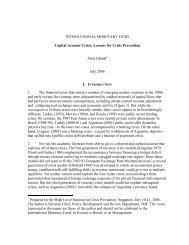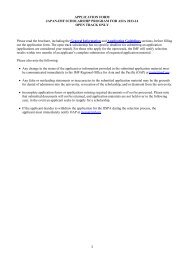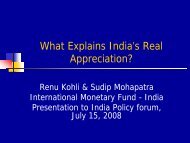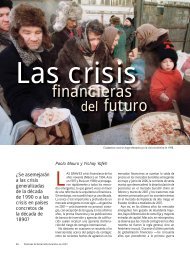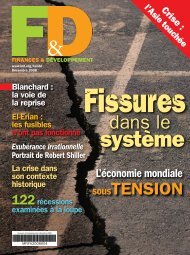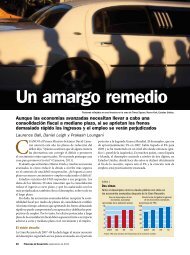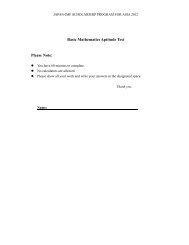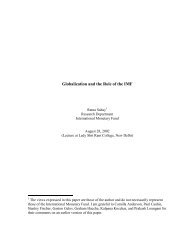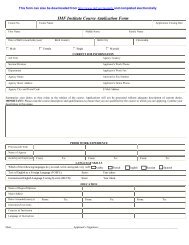Chapter 20: Taxation of Corporate Reorganizations - IMF
Chapter 20: Taxation of Corporate Reorganizations - IMF
Chapter 20: Taxation of Corporate Reorganizations - IMF
You also want an ePaper? Increase the reach of your titles
YUMPU automatically turns print PDFs into web optimized ePapers that Google loves.
Tax Law Design and Drafting (volume 2; International Monetary Fund: 1998; Victor Thuronyi, ed.)<br />
<strong>Chapter</strong> <strong>20</strong>, <strong>Taxation</strong> <strong>of</strong> <strong>Corporate</strong> <strong>Reorganizations</strong><br />
prohibited. However, most tax systems apply one <strong>of</strong> two alternative approaches or, in some<br />
cases, may apply both approaches simultaneously.<br />
The first approach is a variation on the substance-over-form approach or the requirement<br />
<strong>of</strong> a specific business purpose for the tax-free reorganization. It is mostly applied by case law or<br />
by rulings because it requires some qualitative evaluation <strong>of</strong> facts. The loss carryover will be<br />
permitted only when there is some economic substance to the merger that justifies the<br />
compensation <strong>of</strong> losses from one line <strong>of</strong> business with pr<strong>of</strong>its in another line <strong>of</strong> business. This<br />
approach sometimes leads to surprising results and causes uncertainty for taxpayers. In some<br />
cases, tax law allows a tax loss carryover only if there is a business purpose. 85 A variation <strong>of</strong> this<br />
approach requires continuity <strong>of</strong> business activity. 86<br />
The second approach is a strict statutory and quantitative approach. The tax law states<br />
some hard and fast rules that are based on quantitative restrictions that always apply, even when<br />
loss compensation in the tax-free reorganization would be justified on good business grounds. 87<br />
Basically, there are two ways to apply this approach: one is a continuity-<strong>of</strong>-shareholders test and<br />
the other is a comparison-<strong>of</strong>-assets test.<br />
The continuity-<strong>of</strong>-shareholders test was used in the United States before the Tax Reform<br />
Act <strong>of</strong> 1986. The rule called for tax loss carryovers to be reduced in proportional amounts when<br />
the shareholders <strong>of</strong> the transferor company did not acquire a certain minimum threshold participation<br />
in the transferee company. For example, full loss carryover was permitted only when the<br />
shareholders <strong>of</strong> the loss company obtained at least a <strong>20</strong> percent share participation in the<br />
pr<strong>of</strong>itable company. For each full percentage point by which the shareholders <strong>of</strong> the loss<br />
company fell short <strong>of</strong> the <strong>20</strong> percent target, the amount <strong>of</strong> the loss carryover was reduced by 5<br />
percent. For example, when the shareholders <strong>of</strong> the loss company acquired only 5 percent <strong>of</strong> the<br />
interest in the pr<strong>of</strong>itable company, only 25 percent <strong>of</strong> the amount <strong>of</strong> the tax losses could be<br />
carried forward. 88<br />
Another approach is the relative comparison-<strong>of</strong>-assets test. Losses can be carried forward<br />
only to the extent <strong>of</strong> the percentage share that the assets <strong>of</strong> the loss company represent in the total<br />
assets <strong>of</strong> the combined company or companies after the reorganization. For example, if the net<br />
value <strong>of</strong> the loss company represents only 5 percent <strong>of</strong> the total value <strong>of</strong> the combined<br />
companies, only 5 percent <strong>of</strong> the loss may be carried over. 89<br />
85 Libson Shops v. Koehler, 353 U.S. 382 (1957); Maxwell Hardware Co. v. Commissioner, 343 F.2d. 713 (9th Cir.<br />
1965).<br />
86 E.g., DEU KStG § 8(4) (denying tax loss carryovers when more than 75 percent <strong>of</strong> the shares have been transferred<br />
and the acquired company has substantially changed its business). This rule puts severe restrictions on the<br />
rule that permits the transferee company to carry forward tax losses in a tax-free reorganization.<br />
87 In the Netherlands, there is no tax exemption for an asset acquisition when one <strong>of</strong> the participating companies has<br />
a tax loss carryover (combination <strong>of</strong> Vpb §§ 14 and <strong>20</strong>); see also DEU KStG § 8(4).<br />
88 See USA IRC § 382 (1986); see also AUS ITAA (1936) § 80 DA(A)(d); GBR ICTA § 768 (a major change in<br />
ownership and a major change in the nature or conduct <strong>of</strong> a trade).<br />
89 See BEL CIR § <strong>20</strong>6(2).<br />
- 26 -





